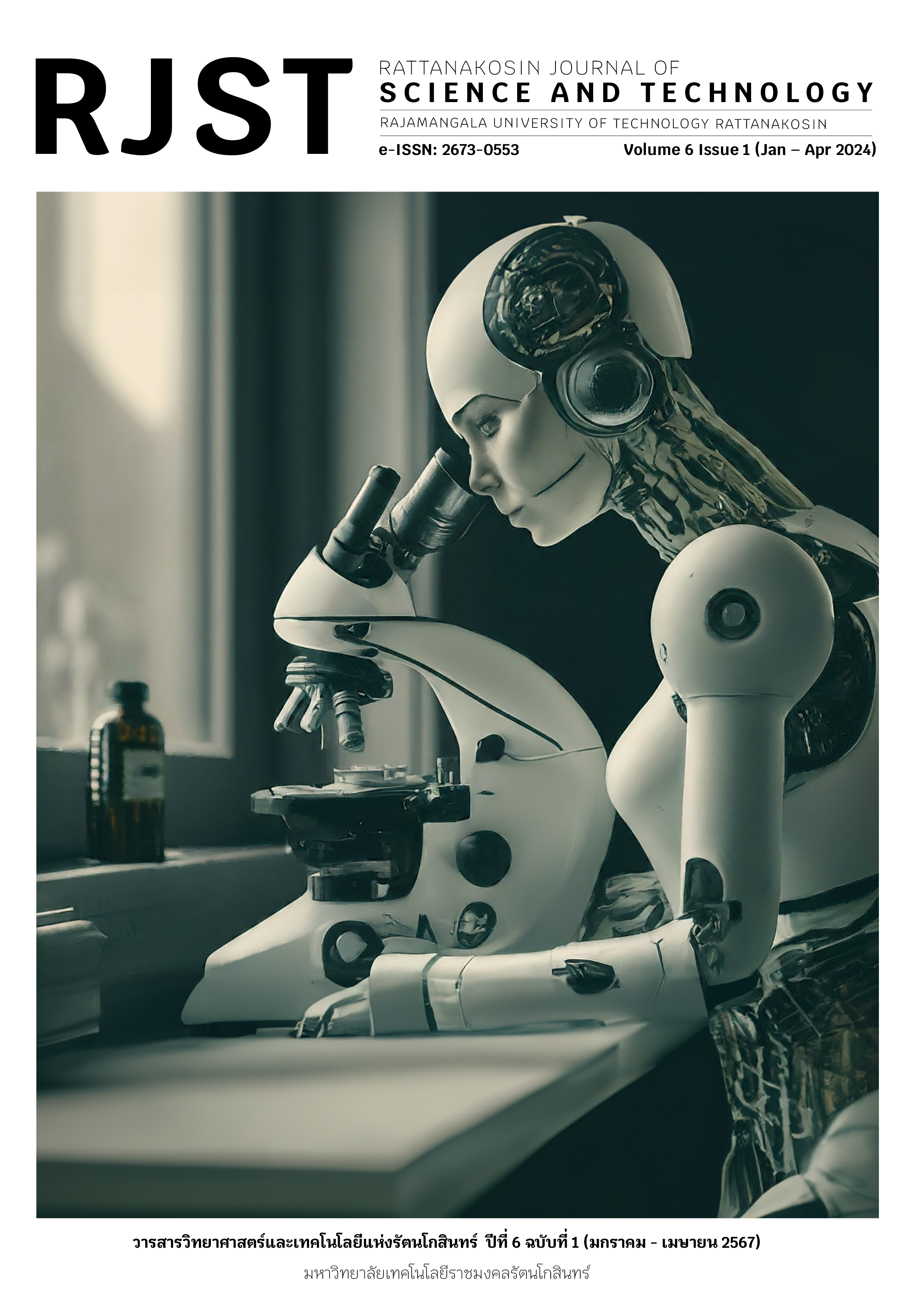Prediction model for cervical cancer by using machine learning
Main Article Content
Abstract
The aim of this study is to compare predictive performance of cervical cancer prediction models using machine learning techniques, including decision trees, gradient boosted trees, random forests, and deep learning. The study collected data from Kaggle.com, comprising 110 data points, with 21 independent variables, such as age, number of sexual partners, age of first sexual intercourse, number of pregnancies, smoking per year, contraceptive pill use, year of contraceptive pill use, intrauterine device use, years of intrauterine device use, sexually transmitted infections, genital herpes, genital warts, syphilis, cervical infection, herpes simplex virus infection, rice-sized cervical polyps, AIDS, HIV infection, HPV infection, and hepatitis B virus infection. The dependent variable is binary, classifying individuals into two groups: those with cervical cancer and those without. The study results indicate that the deep learning-based cervical cancer prediction model performs with the highest predictive efficiency, achieving an accuracy rate of 95.45%.
Article Details

This work is licensed under a Creative Commons Attribution-NonCommercial-NoDerivatives 4.0 International License.
The content within the published articles, including images and tables, is copyrighted by Rajamangala University of Technology Rattanakosin. Any use of the article's content, text, ideas, images, or tables for commercial purposes in various formats requires permission from the journal's editorial board.
Rajamangala University of Technology Rattanakosin permits the use and dissemination of article files under the condition that proper attribution to the journal is provided and the content is not used for commercial purposes.
The opinions and views expressed in the articles are solely those of the respective authors and are not associated with Rajamangala University of Technology Rattanakosin or other faculty members in the university. The authors bear full responsibility for the content of their articles, including any errors, and are responsible for the content and editorial review. The editorial board is not responsible for the content or views expressed in the articles.
References
พญ.สุขุมาลย์ สว่างวารี. (2566). มะเร็งสตรี รู้ก่อน รักษาไว มีโอกาสหาย ป้องกันได้ คุณภาพชีวิตดี. https://www.chaophya.com/2023/04/มะเร็งสตรี/
Sharma, A. (2023, Sep 18). 4 Simple Ways to Split a Decision Tree in Machine Learning. https://www.analyticsvidhya.com/blog/2020/06/4-ways-split-decision-tree/
Silipo, R. (2020, Mar 19). Ensemble Models: Bagging & Boosting. https://medium.com/ analytics-vidhya/ensemble-models-bagging-boosting-c33706db0b0b.
D'Souza, J. (2018, Mar 20). A trip to Random Forest. https://medium.com/greyatom/a-trip-to-random-forest-5c30d8250d6a.
ดร.ไพรสันต์ ผดุงเวียง. (2563). สรุปเนื้อหาในหลักสูตร Data Scientist Essentials ตอนที่ 7 Introduction to deep learning. https://rdbi.co.th/2020/01/data-scientist-7/
Sarabun, K. (2020). Learning - Data Science and AI: Machine Learning with Python. Bangkok: Media Network Publisher.
Gokagglers. (2018). Cervical Cancer Risk Classification. https://www.kaggle.com/datasets/loveall/cervical-cancer-risk-classification
กอบเกียรติ สระอุบล. (2565). เรียนรู้ AI: Deep Learning ด้วย Python (พิมพ์ครั้งที่ 1). สำนักพิมพ์ อินเตอร์มีเดีย.

